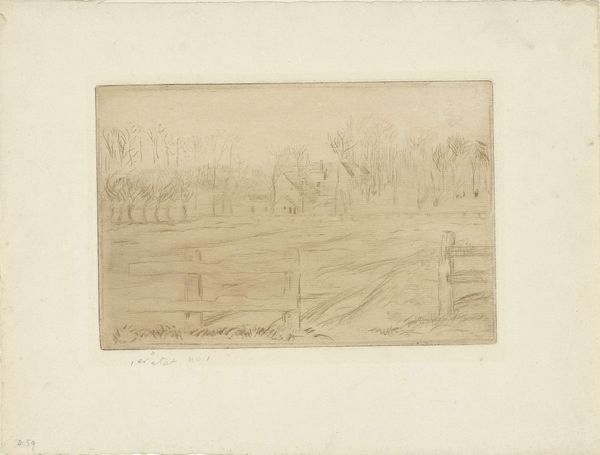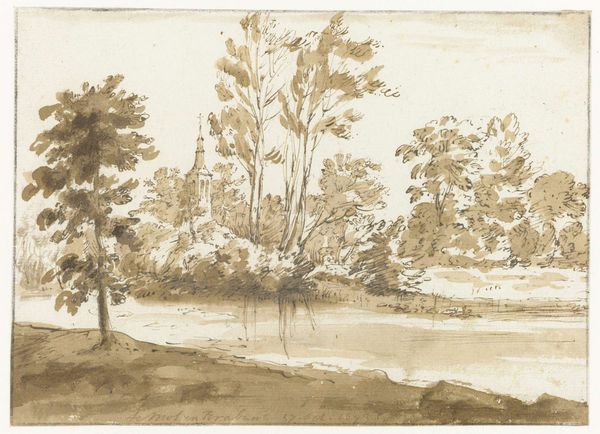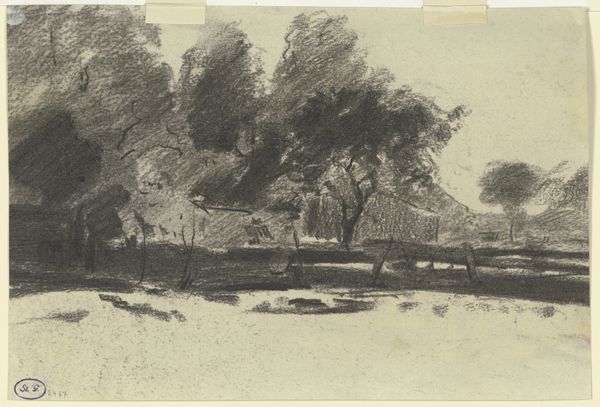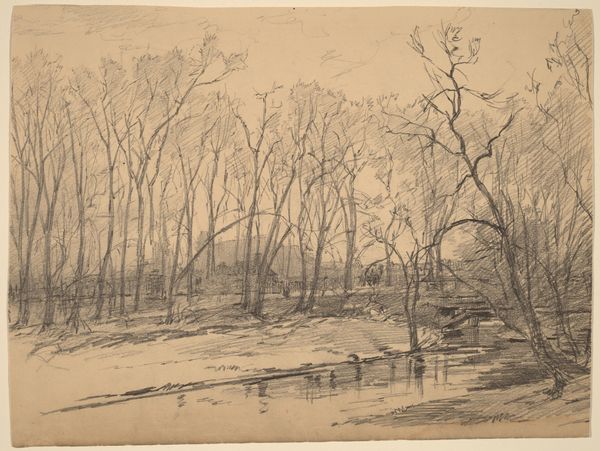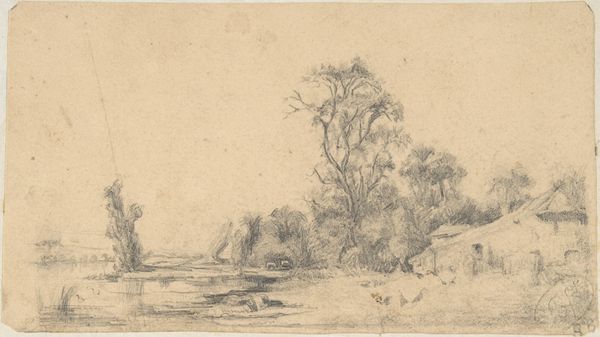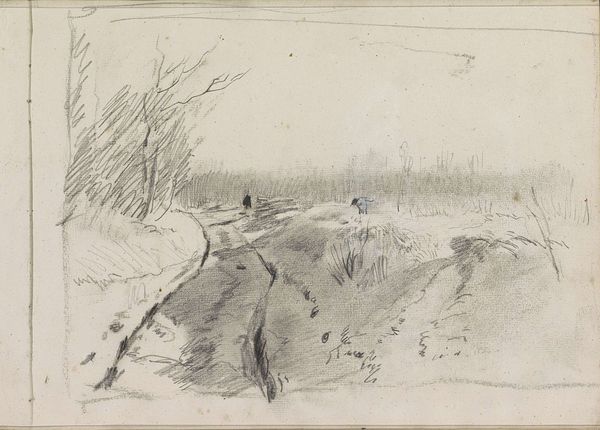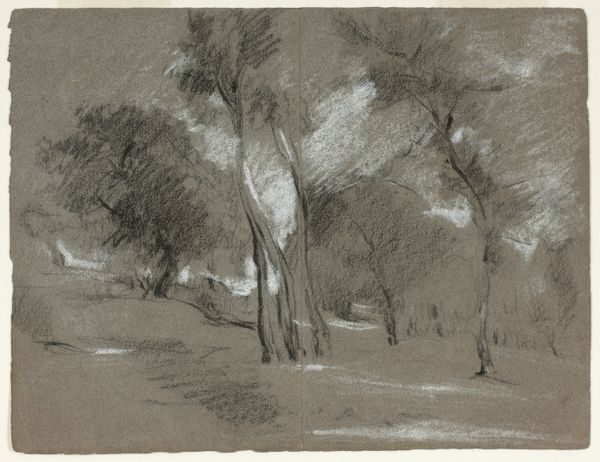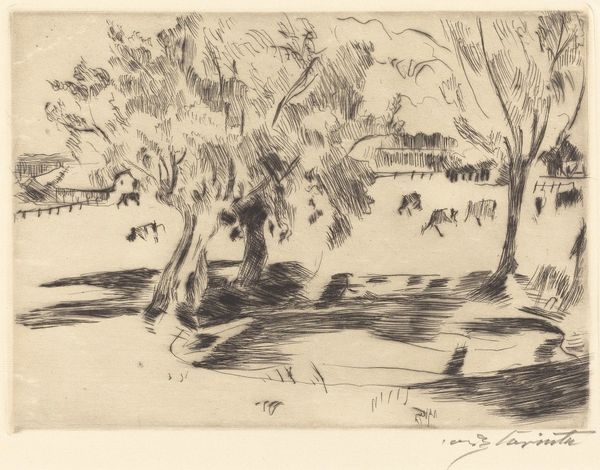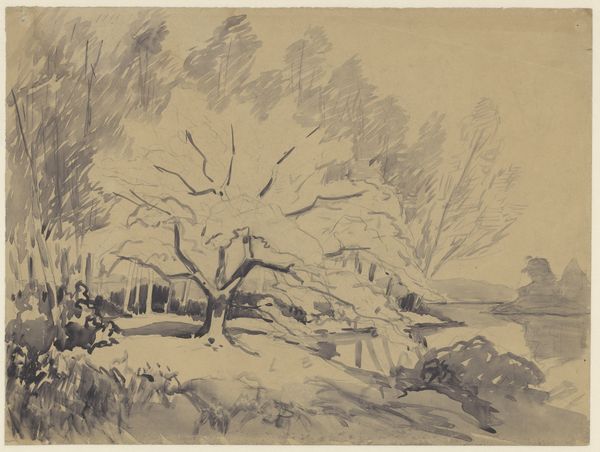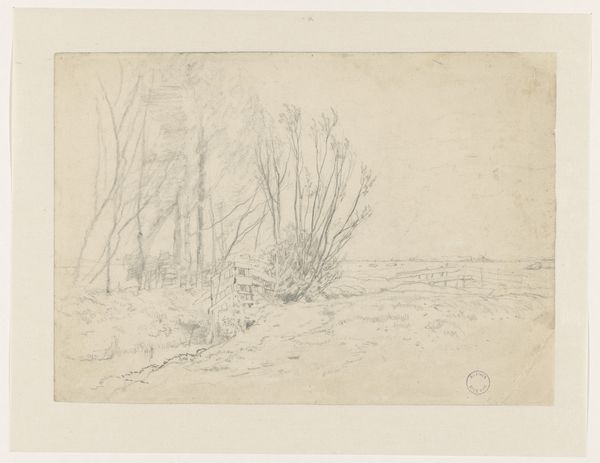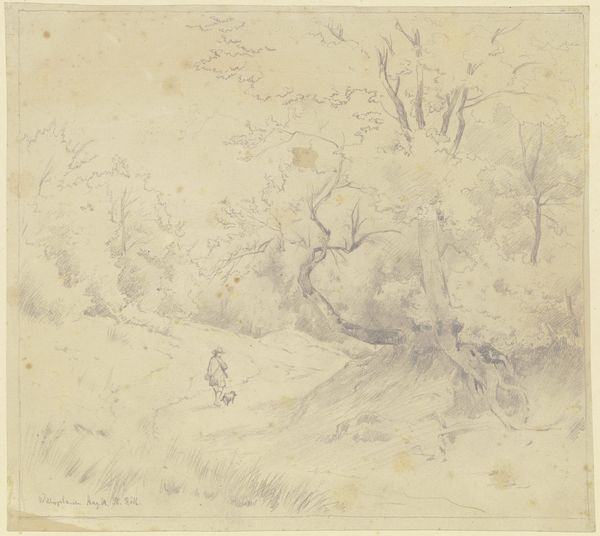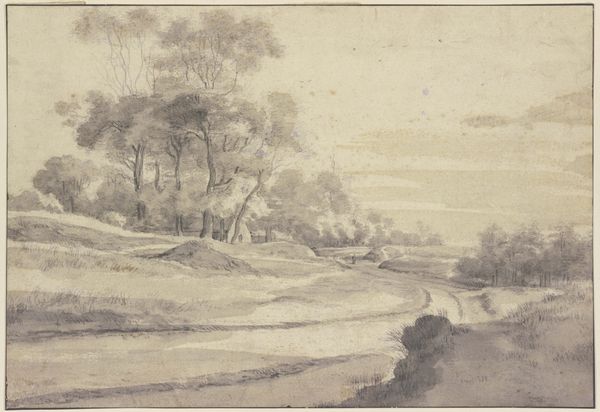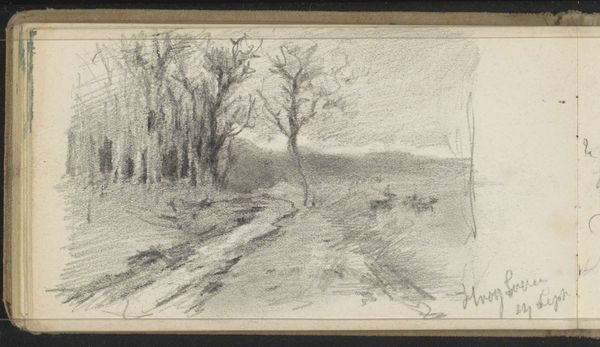
Copyright: National Gallery of Art: CC0 1.0
John Marin’s watercolor, *West New York, New Jersey,* presents a muted, atmospheric landscape. The gentle washes of color—primarily blues, browns, and grays—create a hazy, dreamlike quality, softening the starkness of the bare trees and sparse vegetation. The composition, divided horizontally, with the lower portion dominated by a body of water and a grazing animal, offers a tranquil yet somewhat melancholic mood. Marin's approach to watercolor reflects a modernist sensibility. The dissolution of solid form and his emphasis on fluid, expressive brushwork move away from traditional landscape painting. The work can be interpreted through a semiotic lens, where the sparseness of the scene and the muted color palette function as signs evoking feelings of transience and solitude. Marin's choice to depict a seemingly unremarkable, almost barren landscape challenges our expectations. It suggests a concern with capturing the emotional and sensory experience of a place, rather than its literal appearance. Note how Marin’s delicate application of watercolor blurs the distinction between representation and abstraction. This pushes the boundaries of how we perceive and interpret landscape in modern art.
Comments
No comments
Be the first to comment and join the conversation on the ultimate creative platform.
